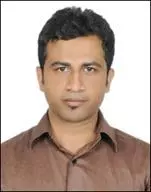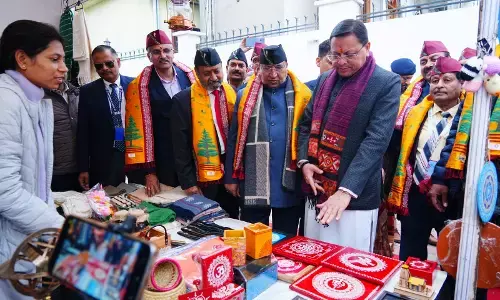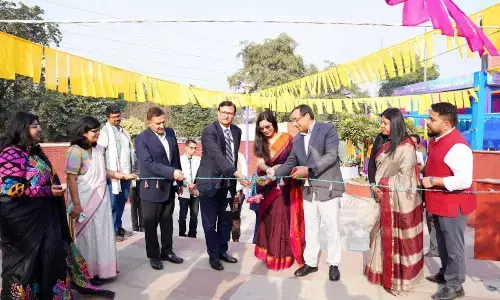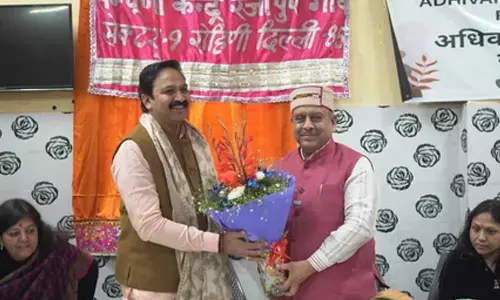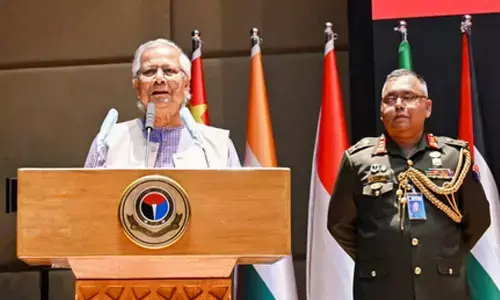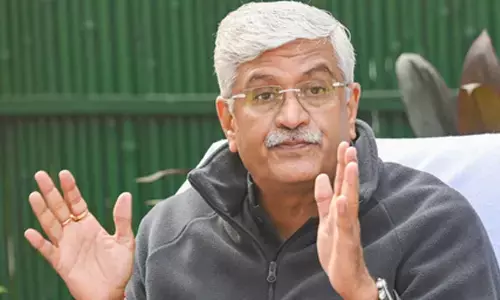Hospital uses 3D printed implant technology to save techie from bone cancer

Hospital uses 3D printed implant technology to save techie from bone cancer
In the first such case in the world, doctors at the HCG Cancer Hospital, Bengaluru have successfully implanted three 3D-printed bones in a 30-year-old man.
Bengaluru: In the first such case in the world, doctors at the HCG Cancer Hospital, Bengaluru have successfully implanted three 3D-printed bones in a 30-year-old man. The hospital replaced three of the most crucial bones in the left arm. Nakul (name changed), a software engineer by profession, from Bengaluru who was suffering from bone cancer, visited HCG Cancer Hospital, with a massive tumour on his left shoulder, which had eventually progressed into the size of a basketball.
What began as a minor ache in Nakul's left shoulder soon swelled to form a large tumour, limiting his everyday movements and causing him a lot of agony throughout the day. To heal the condition, he visited many doctors across the country. but to no avail. Almost everyone advised him to amputate his left limb. However, Nakul was determined to retain his limb and visited HCG Cancer Hospital in Bengaluru for a second opinion. Dr Pramod Chinder and his team of specialists discussed this with him and devised a plan to save his limb using all possible means. The diagnosis was that he had a chondroid tumour in his left arm bone. It had extensively extended into the neck, back, and chest wall. Further, reconstructing his shoulder to achieve a functional limb posed a challenge. Commenting on the challenges of the case, Director and Head - Orthopaedic Oncology, HCG Cancer Hospital, Dr Pramod S Chinder said, "It was not easy for us to undertake this complex surgery. Usually, the hand is amputated in such cases. Since the tumour was huge and had grown all over, removing this massive lump would have created a substantial bony defect. This required an additional reconstructive procedure that enables the patient's limb to be utilized effectively. The implants and prosthesis that are commonly available, are only intended to replace a joint, a portion of bone or the complete bone. But, in Nakul's case, three key bones needed to be repaired or replaced, which complicated the case further. With such complications, we decided to use 3D printing technology to save the limb which had never been used in India."
The titanium-based 3D printed implants were created, after 5 long months of scanning, discussions, designing, prototyping, and brainstorming with expert doctors, and a group of engineers. Based on the size and the spread of the tumour and considering complexities, the surgical procedure was planned for two consecutive days. A team of about 10 dedicated doctors from different fields were involved in the surgery. To ensure the best results, multiple trials with the implants, a pre-planned surgical scheme, a comprehensive armamentarium of devices, and surgeons and doctors with clinical expertise were involved. The first day of the surgery was completely dedicated to eradicating the tumour while preserving vital nerves and blood vessels needed for normal hand function. It was followed by an entire day just for the reconstruction and implantation of the bones and the limb.
Dr Pramod added, "The effort each of us has put, including the patient and his family members, is totally worth it after seeing him today. Our mission to deliver the best outcomes in the world by involving the best professionals and adopting cutting-edge technology drove us into making this surgery possible. Accomplishing such procedures can eventually become an everyday practice if we all can take that extra step," he said.
Expressing his gratitude, the patient, Nakul said, "It is unquestionably a dream come true, and I am eternally grateful to Dr Pramod Chinder and his team of specialists. Being a basketball player, I couldn't imagine my life without a hand. My determination to save it only strengthened after consulting the HCG Cancer Hospital, Bengaluru. I'm glad to know that the technology's usage was the first time in India."
The procedure has helped save Nakul's limb and has helped him lead a normal life. 3D printing allows for planning before surgery. Once printed, they are delivered fast. It minimizes doctors' stress, minimizes complications, improves precision of surgery because of the advanced imaging. It allows for precision of surgery. Real time metallic implants are the future. The future will see exclusive implants, tissue engineering, stem cell engineering and the use of 3D printed parts as scaffolds. 3D printing has come to be a very useful technology in orthopaedics now and will only grow in its usefulness in future.

